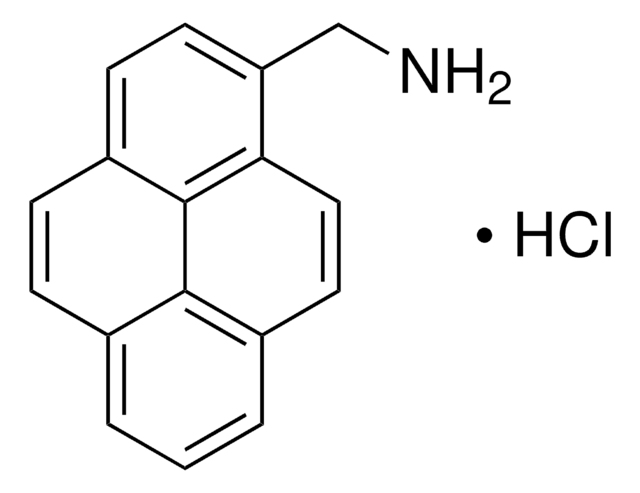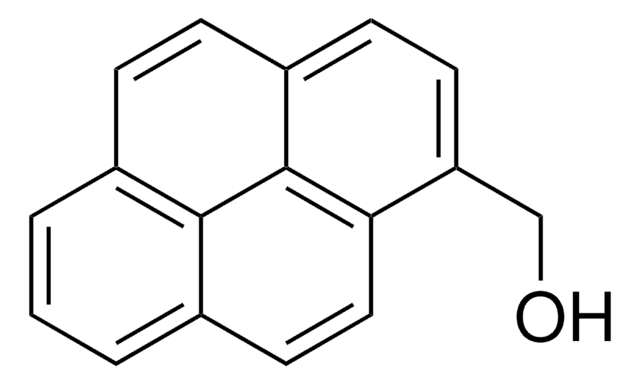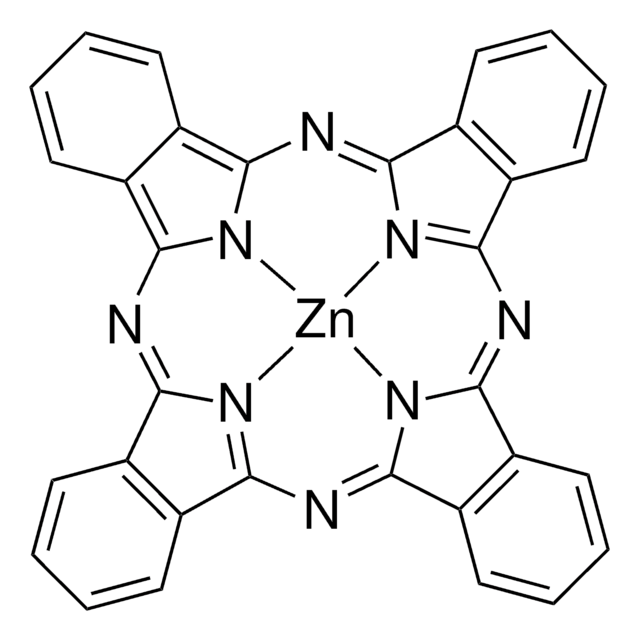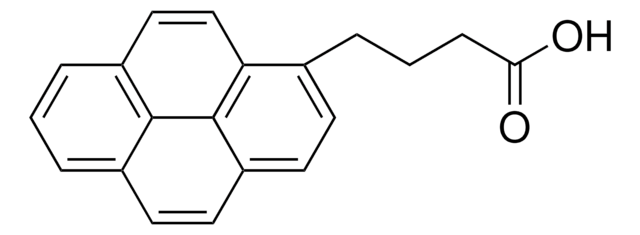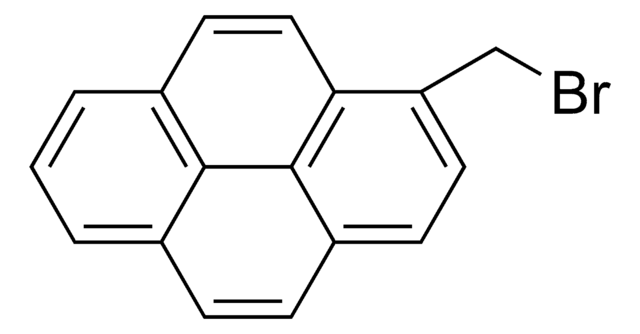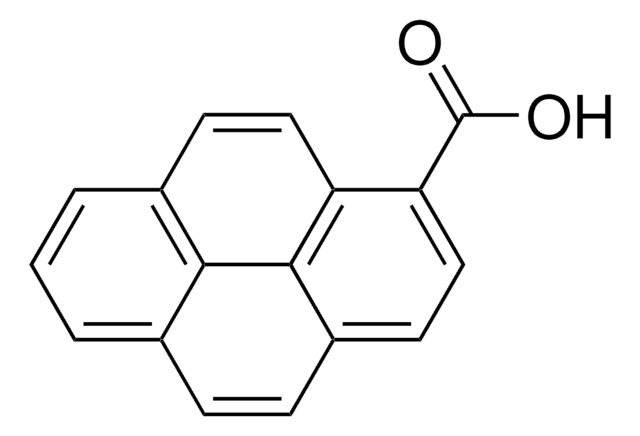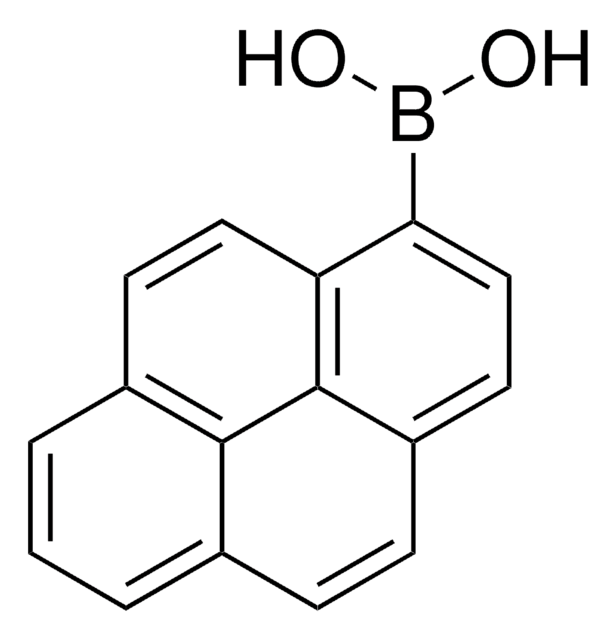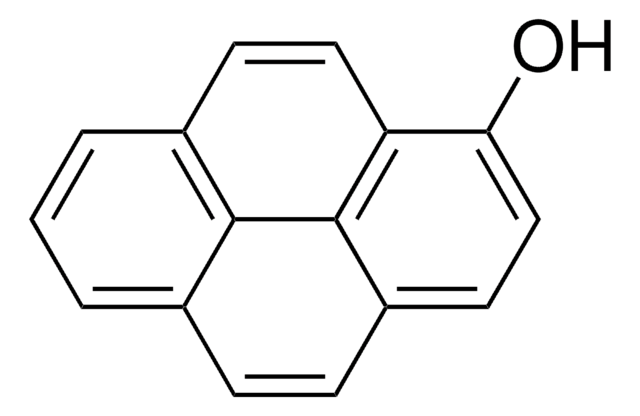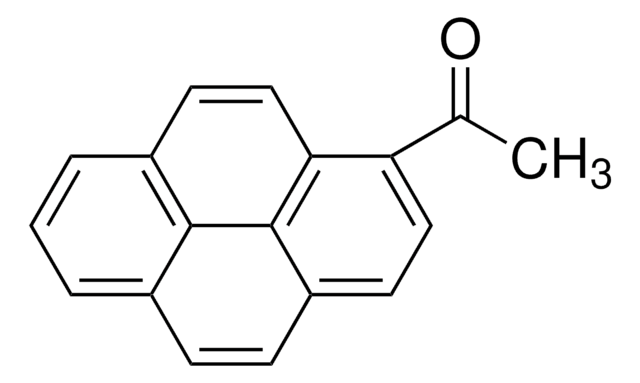399655
1-Pyrenebutanol
99%
Synonym(s):
4-(1-Pyrenyl)butanol, 4-(Pyren-1-yl)butan-1-ol
Sign Into View Organizational & Contract Pricing
All Photos(1)
About This Item
Empirical Formula (Hill Notation):
C20H18O
CAS Number:
Molecular Weight:
274.36
MDL number:
UNSPSC Code:
12352100
PubChem Substance ID:
NACRES:
NA.22
Recommended Products
Quality Level
Assay
99%
mp
80-83 °C (lit.)
SMILES string
OCCCCc1ccc2ccc3cccc4ccc1c2c34
InChI
1S/C20H18O/c21-13-2-1-4-14-7-8-17-10-9-15-5-3-6-16-11-12-18(14)20(17)19(15)16/h3,5-12,21H,1-2,4,13H2
InChI key
MRENSFROWALQNU-UHFFFAOYSA-N
Related Categories
General description
1-Pyrenebutanol, an alcohol, is an organic building block. It participates in the polymerization of cyclic esters (lactide, δ-valerolactone and ε-caprolactone).
Application
1-Pyrenebutanol may be employed in the following studies:
- As a new fluorescent substrate to investigate the allosteric mechanism of P450eryF.
- Preparation of fluorescent polymer based on D,L-lactic acid units end-capped with 1-pyrenebutanol by ring-opening polymerization.
- Synthesis of 1-pyrenebutanol (PB)-labeled poly(lactic acid) (PLA) nanoparticles (NPs).
Signal Word
Warning
Hazard Statements
Precautionary Statements
Hazard Classifications
Eye Irrit. 2 - Skin Irrit. 2 - STOT SE 3
Target Organs
Respiratory system
Storage Class Code
11 - Combustible Solids
WGK
WGK 3
Flash Point(F)
Not applicable
Flash Point(C)
Not applicable
Personal Protective Equipment
dust mask type N95 (US), Eyeshields, Gloves
Choose from one of the most recent versions:
Already Own This Product?
Find documentation for the products that you have recently purchased in the Document Library.
Customers Also Viewed
Cung An Nguyen et al.
European journal of pharmaceutical sciences : official journal of the European Federation for Pharmaceutical Sciences, 20(2), 217-222 (2003-10-11)
A new fluorescent polymer based on D,L-lactic acid units end-capped with 1-pyrenebutanol (PLAP) was synthesized by ring-opening polymerization. PLAP having different molecular weight could be obtained by varying the ratio of D,L-lactide and 1-pyrenebutanol. Fluorescent nanoparticles (NP) were prepared using
Dmitri R Davydov et al.
Biochemical and biophysical research communications, 294(4), 806-812 (2002-06-14)
1-Pyrenebutanol (1-PB) has been used as a new fluorescent substrate for P450eryF to explore the molecular mechanisms of cooperativity. Hydroxylation of 1-PB by P450eryF was detected by both fluorometric and chromatographic assays. Binding was monitored by a substrate-induced low-to-high spin
Poly (L-lactide) Nanoparticles via Ring-Opening Polymerization in Non-aqueous Emulsion.
Dorresteijn R, et al.
Macromolecular Chemistry and Physics, 213(19), 1996-2002 (2012)
Kazuki Fukushima et al.
Biomacromolecules, 18(11), 3834-3843 (2017-10-04)
We developed a biodegradable polycarbonate that demonstrates antithrombogenicity and vascular cell adhesion via organocatalytic ring-opening polymerization of a trimethylene carbonate (TMC) analogue bearing a methoxy group. The monoether-tagged polycarbonate demonstrates a platelet adhesion property that is 93 and 89% lower
Dane Christie et al.
ACS central science, 4(4), 504-511 (2018-05-04)
Nanoscale compositional heterogeneity in block copolymers can impart synergistic property combinations, such as stiffness and toughness. However, until now, there has been no experimental method to locally probe the dynamics at a specific location within these structured materials. Here, this
Our team of scientists has experience in all areas of research including Life Science, Material Science, Chemical Synthesis, Chromatography, Analytical and many others.
Contact Technical Service